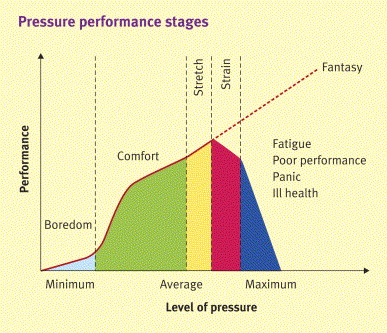Stress and Disease
The Stress Development Model theorizes there is a continuum between situational stressors and the development of disease. GI dysfunction, cardiovascular disorders, and acquired neuromuscular disorders have been linked to chronic stress.
Activation of our sympathetic nervous system (fight or flight) increases release of adrenaline with multiple physiological effects across body systems.
 |
To scroll the timeline, click the bottom arrows or click and drag the timeline area. Click each event for more details. |
|
This content requires JavaScript enabled.
|
|
Eustress and Distress
"Nobody can make you feel inferior without your consent" - Eleanor Roosevelt
As noted in the Stress Development Model, stressors can lead to distress and then disease when the perception of the stress and the emotional response result in overactivation of the sympathetic nervous system. Eustress is the "good stress" which can provide motivation and drive to achieve and produce more in a given time frame. It the demand to achieve a certain result is perceived as a negative, then a eustress can progress into distress.
Stretch periods are ideally short periods of time where increased performance is required to achieve a result. If periods of stretch are long or uninterrupted, performance strain results and overall outcomes (performance or body functions) decline.




